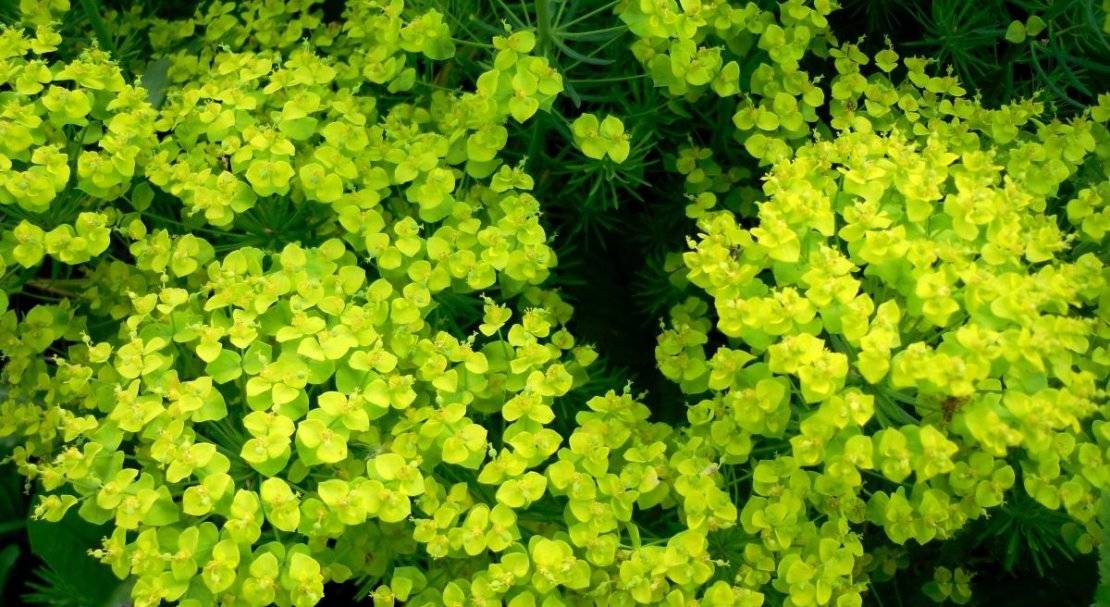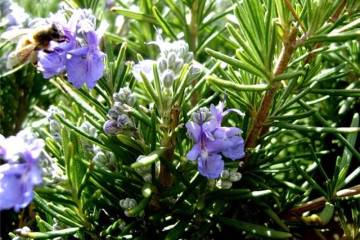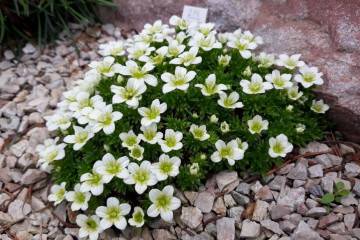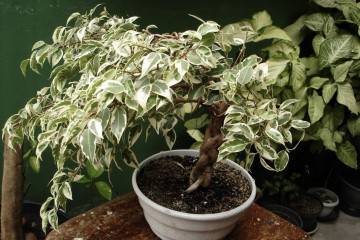Cypress spurge - how to care at home
Content:
Any gardener strives to decorate his own flower bed as effectively as possible. Very often, the choice falls on those ornamental crops that do not require complex care and perfectly tolerate various weather conditions. Cypress euphorbia is very popular among flower growers, which can decorate any flower garden and does not create much trouble for the owner of the site.
Description of the flower
Cypress euphorbia is common in Russia, Ukraine and Bulgaria. Tall bushes have a well-developed branched creeping root system. Near the base of the bush, numerous stems begin to branch. Axillary peduncles are concentrated in the upper area of the shoots.
The presence of needles on the stems makes the plant look like a cypress. The diameter of the needles is in the range of 15-25 mm. They are painted in a gray-green palette. The tips of the needles are blunt. In the lower part of the bushes, needle-like foliage acquires a scaly shape. The shade of flowers can be either pink or yellow.
Healing properties
In ancient times, the herb was widely used in folk medicine. For treatment can be used:
- the juice;
- plant seeds.
The seeds contain healthy fats used in homeopathy. The use of plant juice can help the patient cope with:
- spots and freckles;
- deprive;
- helminthic invasion;
- stool problems;
- wounds;
- warts and calluses.
Planting and caring for cypress milkweed
In order for the plant to please with a chic flowering, it is necessary to provide it with proper care. Below you can familiarize yourself with the main features of caring for an ornamental crop.
Priming
Euphorbia is distinguished by its unpretentiousness to the composition of the soil. However, experts still recommend planting bushes in fertile soil, mixed with a small amount:
- river sand;
- peat;
- rotted compost.
Lighting
For planting flowers, it is recommended to select slightly shaded areas. Such a place will allow to achieve active growth of decorative culture and abundant flowering. By planting euphorbia in open sunlight, you can provoke the stretching of shoots, the loss of decorative qualities and the death of the plant.
Temperature and watering
The cypress perennial is frost-resistant. It is able to survive even in severe winter frosts.
By systematically and abundantly watering the culture, you can achieve abundant flowering, which will delight the owner of the site for a long time. During the summer months, it is advisable to moisten the soil every two days. During a hot period, you should increase the frequency of watering.
Fertilizing and loosening the soil
For feeding cypress milkweed, mineral and organic fertilizers are used. The frequency of top dressing should not exceed three times a year. Humus is introduced into the soil every 4 years. In early April, it is worth adding peat and humus to the ground.
In order for the root system to develop rapidly, it is necessary to take care of a sufficient supply of oxygen. For this purpose, it is advisable to carry out weekly loosening of the soil.
Features of winter care
Despite the high level of frost resistance, flower growers pay attention that it is still worth covering the plant for the winter. At the end of October, dried shoots and broken off stems are removed without regret. After that, the shoots are pressed against the surface of the soil and covered with spandbond and a layer of spruce branches.
Bloom
Flowering can be either once or twice a year. The period of the first wave falls in mid-May - late June. The second wave can be expected in September.
The blossoming flowers are painted in a pink and yellow palette. After flowering, oval-shaped three-root fruits begin to form on the bushes. Their surface is heterogeneous with a slight tuberosity.
Pruning
To give the bushes a neat outline, it is necessary to carry out planned pruning after the plants have faded. The procedure not only promotes neatness, but also makes the next flowering more abundant. If you ignore pruning, spurge becomes weed-like.
Reproduction
Three methods are used to propagate cypress milkweed:
- vegetative;
- seminal;
- grafting.
To implement the second method, it is necessary to purchase high-quality seed material. To do this, it is better to go to a nursery or garden center. Seeds are sown in September directly in open ground. Closer to April, rapidly developing shoots of euphorbia can be found.
Stages of vegetative reproduction:
- In early spring, after digging up the bushes in the garden, it is necessary to divide the culture into parts with a sharp shovel.
- The resulting shoots are seated in pre-prepared holes.
- The soil is moistened with a spray bottle.
If you want to propagate the caper spurge, you can use the cuttings method. In the spring, when examining the shoots, cuttings should be prepared. After that, the cut off parts of the shoots are washed in clean water. The cut areas are sprinkled with crushed coal. The shoots are planted in a soil mixture, which consists of:
- fertile land;
- sand;
- charcoal.
The soil with cuttings is moistened with a spray bottle. After four weeks, the cuttings will be able to take root. After another 10 days, you can transplant them to an open bed.
Transfer
Drought-resistant succulents do not tolerate excess moisture in the soil and stagnant water. Do not plant an ornamental crop near a wetland.
Step-by-step transplant process:
- Holes are dug in the selected area.
- The surface of the bottom of the pit is covered with a drainage layer of pebbles, crushed brick or expanded clay.
- Euphorbia seedlings with a root system and a lump of soil are placed in the grooves.
- The roots of the culture are covered with a layer of earth, which includes sand, peat, fertile soil and humus.
Possible growing problems and diseases
Euphorbia is rarely affected by diseases, but the bushes can suffer from waterlogging. Due to abundant watering, the plant begins to wither and die. In some cases, a fungal infection may occur:
- fusarium;
- root rot.
In this case, it is advisable to carry out the treatment with a fungicidal preparation as soon as possible.
Also, an invasion of pests can complicate the cultivation of an ornamental crop: whiteflies and spider mites. Against them, it is necessary to spray the bushes with soapy water or insecticide.
In addition to the listed troubles, other problems may arise during the cultivation of cypress euphorbia:
- wilting of a plant, yellowing and falling of foliage may indicate the defeat of an ornamental culture by nematodes. To save flowers, experts recommend using insecticides containing phosphamide;
- white bloom on milkweed foliage indicates a mealybug invasion. Bushes need to be examined and the pest eggs destroyed. After that, you can proceed to the treatment of euphorbia with an insecticidal agent.
Signs and superstitions
Many signs and superstitions are associated with cypress milkweed:
- the flower should not be placed in rest rooms. The presence of tubercles and thorns on plants can adversely affect the relationship between spouses;
- the second name of cypress milkweed is the palm of misfortune. It is believed that living in the apartment of such a green friend can lead to trouble in all areas of life;
- if you put pots with a plant in the hallway, you can be sure that euphorbia will protect and preserve your home.
Euphorbia cypress fell in love with modern flower growers due to its unpretentiousness. Even with minimal maintenance, the plant will bloom profusely and delight the owner of the garden with a chic appearance.



















